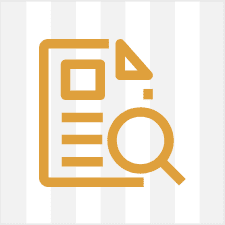- Our Work
-
-
PORTFOLIO
OTHERS
-
-
- Services
-
- How We Work
-
- Resources
-
- About Us
-
- Contact Us
- Let’s Talk
Legacy systems are often seen as a roadblock to digital transformation in the public sector. While these systems have historically served as the backbone of many government agencies, their aging infrastructure, inflexible architectures, and high maintenance costs present significant challenges in a rapidly evolving digital world. However, tearing them down entirely is not always feasible—due to budget constraints, security concerns, and continuity requirements.
That’s where Artificial Intelligence (AI) steps in. Rather than replacing legacy systems outright, government agencies are now using AI to augment, optimize, and modernize existing infrastructure. This approach is proving to be more cost-effective, less disruptive, and strategically aligned with long-term modernization goals.
Why Not Just Replace Legacy Systems?
Government agencies run on decades-old infrastructure—mainframes, COBOL applications, and outdated databases that handle everything from Social Security to defense logistics. Replacing them involves:
Massive capital investments
Extended system downtime
Training and re-certifying staff
Risk of data loss or compliance issues
In most cases, these systems still work—but they lack interoperability, scalability, and agility. The challenge is improving performance and user experience without rebuilding from scratch.
How AI Bridges the Gap
AI technologies—such as machine learning (ML), natural language processing (NLP), robotic process automation (RPA), and intelligent data analytics—are being used to bring new capabilities to legacy environments. Here’s how:
1. Automating Manual Processes
RPA and ML can automate repetitive, rule-based tasks across legacy systems—such as data entry, records management, and document processing. This reduces human error and frees up staff for higher-value tasks.
2. Data Extraction and Integration
AI-powered tools can extract, transform, and interpret data locked in old formats or siloed databases. This enables more seamless integration with modern platforms and real-time analytics, without altering the original data sources.
3. Enhanced User Interfaces
Legacy systems often have outdated, text-based interfaces. AI-based middleware solutions can offer modern dashboards, voice recognition, or chatbots that overlay the system, improving user experience without a full overhaul.
4. Predictive Maintenance and Security
AI can proactively monitor system performance, detect anomalies, and predict failures before they occur. In the realm of cybersecurity, machine learning models can flag suspicious activity and respond faster than traditional methods.
5. Policy and Compliance Automation
AI simplifies compliance tracking by automating the review of records, ensuring regulatory alignment, and flagging deviations in real-time. This is vital in heavily regulated government sectors.
Real-World Examples
The Department of Veterans Affairs (VA) uses AI to process and analyze benefits claims, drastically reducing response times while keeping its legacy systems intact.
The IRS implemented machine learning algorithms to detect tax fraud more effectively while still relying on decades-old mainframe technology for data storage.
Defense agencies are using AI-powered predictive maintenance systems that analyze data from old machinery, avoiding unnecessary downtime and saving millions.
Benefits of Augmenting Over Replacing
| Modernizing with AI | Replacing Legacy Systems |
|---|---|
| Lower cost | High upfront investment |
| Minimal disruption | Risky data migration |
| Incremental upgrade | Requires full replacement |
| Faster time-to-value | Longer implementation |
| Enhanced security | Potential exposure during transition |
By taking an augmentation-first approach, government organizations can realize immediate gains while building toward future modernization.
Key Considerations for Implementation
Before jumping into AI modernization, agencies should:
Conduct a system audit to assess compatibility and limitations
Define clear use cases with measurable KPIs
Invest in workforce training to build AI fluency
Engage technology partners with public sector experience
Maintain strict data governance to align with regulations
The Future of Government Technology
The future of public sector IT lies in intelligent interoperability—where legacy systems, cloud solutions, and AI tools work together in harmony. AI serves as the critical bridge, enabling modernization through evolution rather than revolution.
At Finally Free Productions, we specialize in helping government clients leverage AI to modernize their systems efficiently and securely. Whether it’s through intelligent automation, data optimization, or user interface modernization, our solutions deliver real-world results without massive overhauls.
👨💻 Ready to Future-Proof Your Government Systems?
Reach out to FFP to explore how AI can help modernize your existing infrastructure—no rip-and-replace needed.
 All
All AI & ML
AI & ML Healthcare
Healthcare Education
Education Games
Games Fitness
Fitness Business
Business Webapps
Webapps Websites
Websites More
More Startup
Startup Web3 Development
Web3 Development Capabilities
Capabilities Game Development
Game Development Website Development
Website Development Prototyping Services
Prototyping Services Mobile App Development
Mobile App Development Client Dashboard
Client Dashboard Design Process
Design Process IP Protection
IP Protection Project Management
Project Management Working with Finally Free
Working with Finally Free FAQ
FAQ How to Videos
How to Videos About FFP
About FFP Meet The Team
Meet The Team Press
Press